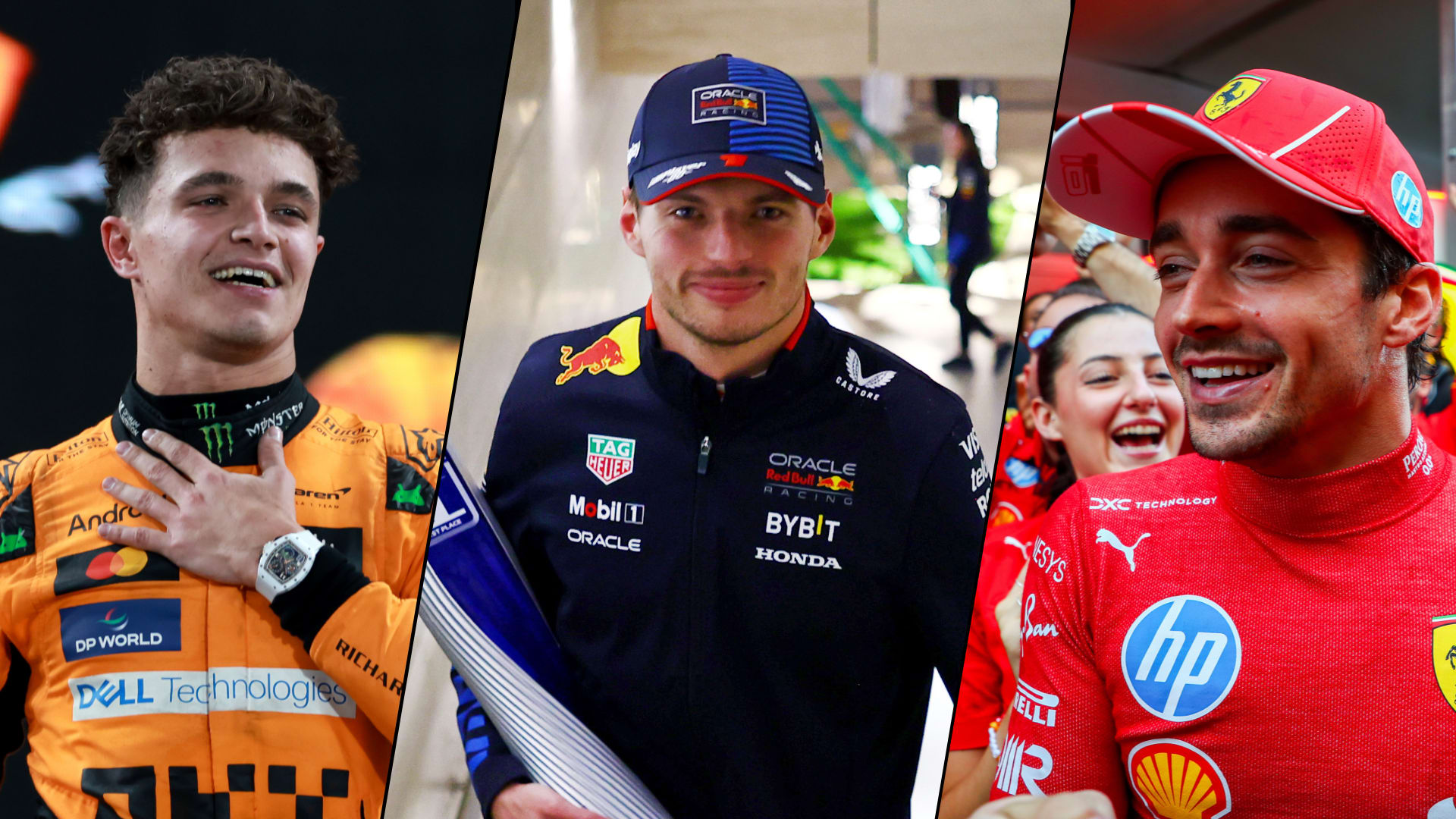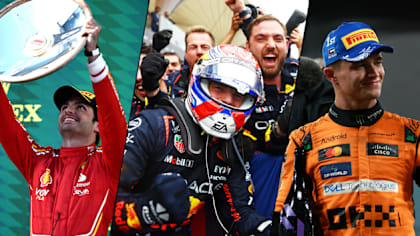)
Feature
STRATEGY GUIDE: What are the possible race strategies for the Miami Grand Prix?

Share
)
A new circuit provides a fresh challenge for all of the teams and plenty of unknowns when it comes to strategy, so let’s take a look at the different options available when it comes to stints and pit stops at the Miami International Autodrome…
What’s the quickest strategy?
Quite simply, nobody knows… Well, they all know a preferred strategy for their specific car, but there’s not one clear option that is on the table for the whole grid. That’s largely down to the track evolution that has been seen throughout the weekend so far, leading to uncertainty over the hard tyre.
For some teams, the hard tyre looks like a strong option for the race, but for others it could prove to be too slow. Part of that comes down to when teams ran the hard in practice, as the track has been improving with more running through the weekend, impacting on its performance.
Given the abrasive nature of the track surface, a two-stop strategy looks like the frontrunner at this stage, starting on the medium tyre to get good performance in the first stint. With a first pit window between laps 13 and 18, the second stint would be on the hard compound, and if a driver has enough sets then a final stop for more hards is possible between laps 30 and 40.
That’s not an option for Red Bull, McLaren, AlphaTauri or Haas, however, so those teams could look to extend the middle stint beyond lap 35 before returning to the mediums, or even get closer to lap 45 to try the soft tyre as the fuel burns off.
Ferrari and Mercedes could do two stints on the hard or one on each compound, but McLaren and AlphaTauri are tied into using all three, or a one-stopper, but with a pit lane loss time of under 22 seconds the two-stop tentatively remains the lead option.
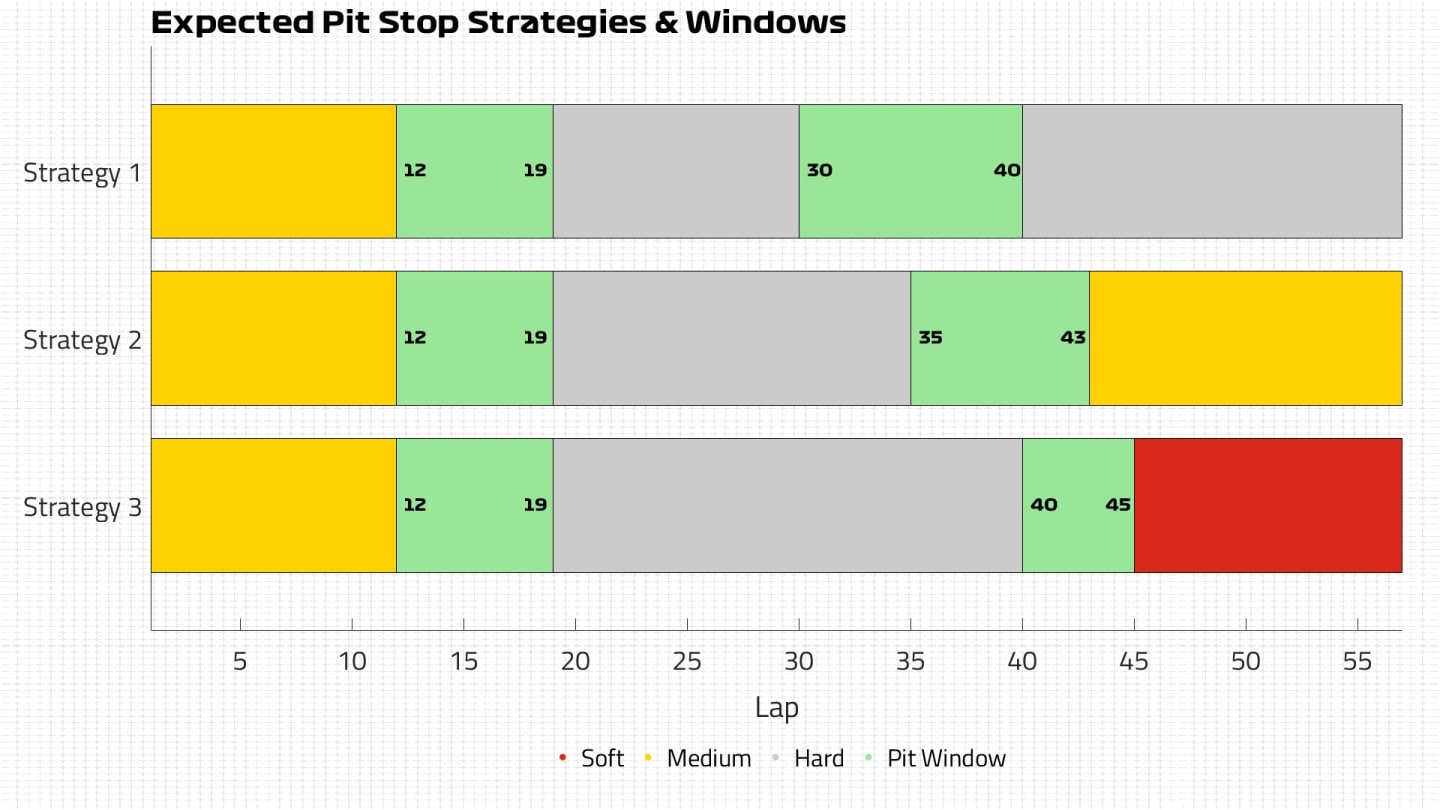
How about a different option for the top ten?
Starting on the medium tyre remains the most likely outcome, but there is the potential for a competitive one-stop strategy if the hard works well enough. Obviously the further the medium can be stretched in the opening stint the better, but a first stop from lap 18 onwards would still open up the opportunity to try.
The one-stopper could also emerge as the quickest strategy based on track conditions, which are another unknown at this stage. Drivers have complained there is little grip off the racing line and that it could make it tough to overtake, but there are two main variables involved.
READ MORE: Costly mistakes and Ferrari under attack from row two – What To Watch For in the Miami GP
One is that the track has been improving throughout the weekend so far, meaning it might prove to be better off-line than expected, especially after further support race running before the grand prix takes place. The other is based on the three DRS zones potentially ensuring overtaking moves are done in a straight line and less dependent on the grip in the corners, allowing drivers on the two-stop strategy to make progress as required.
If neither of those proves to be true and overtaking is difficult due to the low grip, then track position becomes much more crucial and teams will quickly be trying to ensure they can one-stop. How early they work that out will be particularly important.
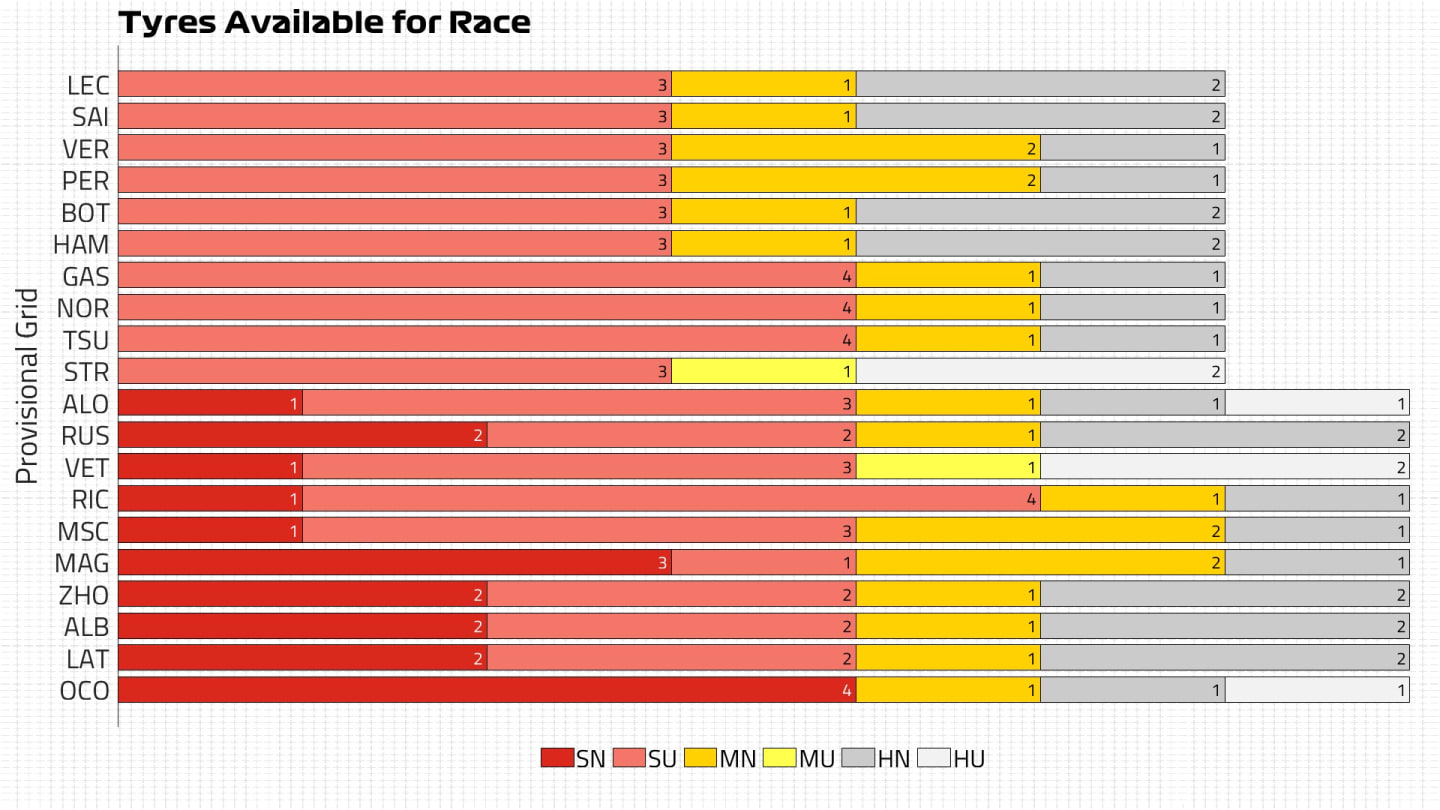
What are the options for the bottom half of the field?
It’s a tough decision for a team that feels like it has a driver out of position, such as Alpine with Esteban Ocon or McLaren with Daniel Ricciardo, because starting on the hard tyre would be a gamble.
Firstly, it will provide less grip in the opening laps and for some teams will be markedly slower than the medium (although that remains uncertain even for those who have tested it because of the interruptions to Friday’s long running).
FACTS AND STATS: First pole and front row lock-out for Ferrari in the States since 2006
Secondly, while using the hard tyre will provide good data for their team mate and allow the lead car to make a more informed strategic decision, that data will also be seen by every other team in the race, and if the hard doesn’t prove to be a good race tyre then the rest of the grid can gain an advantage by avoiding it as much as possible.
But starting on that tyre does provide a chance of running long enough to switch to intermediates or full wets in the case of a shower (more of that below), or a well-timed Safety Car interruption that looks pretty likely given the incidents that we’ve seen so far during the race weekend. So it might be worth a gamble for those at the back of the grid.
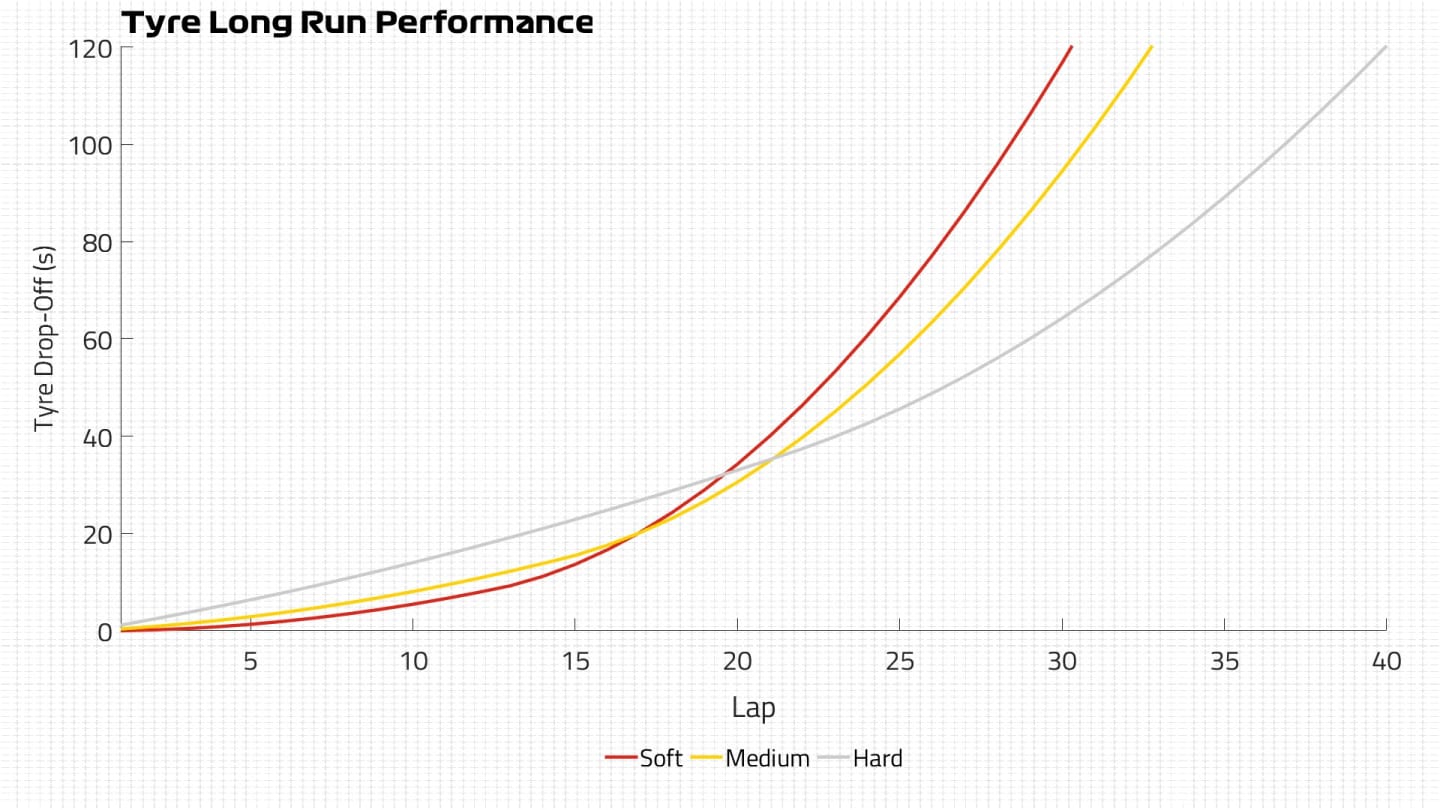
Wait, but what’s the weather doing?
A big thunderstorm hit the track on Saturday night to remind everyone that they are indeed in South Florida, after a number of dry days during the race weekend so far. That could well lower the grip level by the time the race starts, impacting on which of the above strategies teams prefer if it’s dry.
But the forecast also has a 40% chance of rain throughout Sunday afternoon, including when the race is taking place.
HIGHLIGHTS: Relive the action from qualifying as Leclerc takes pole ahead of Sainz
Should that hit, Pirelli expects the track surface to provide good grip for its wet weather options, but also the high temperatures should see the track drying out quickly, meaning the crossover points will be crucial. That also forces teams to wait until it’s definitely wet enough to pit, because if the rain remains relatively light they could end up making two quick stops in succession.
Either way, it’s going to be a hot one, with air temperature forecast to be as high as 34C, edging above what has been seen throughout the weekend so far. The teams have good running in similar conditions but not for consistent long runs, so the true degradation drop-off is unknown, while drivers will also be physically tested in the heat and humidity over a 57-lap race.
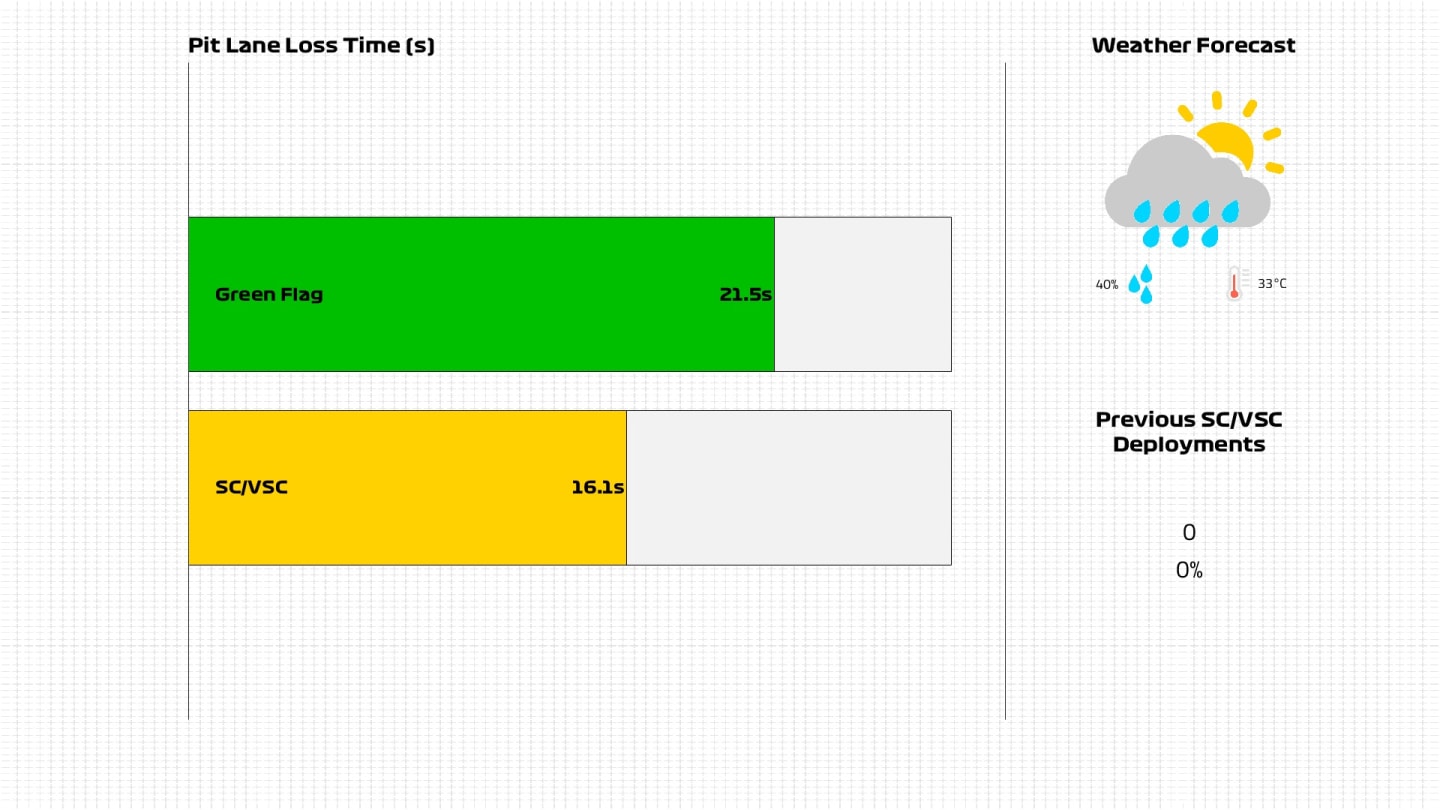
YOU MIGHT ALSO LIKE
Feature Our writers pick their best drivers and favourite stories from 2024 – and who needs to up their game in 2025
News Pourchaire and Maloney set to leave Sauber Academy
News Bottas to re-join Mercedes as reserve driver in 2025
Feature ANALYSIS: Why Bottas' return to Mercedes makes perfect sense for both sides
